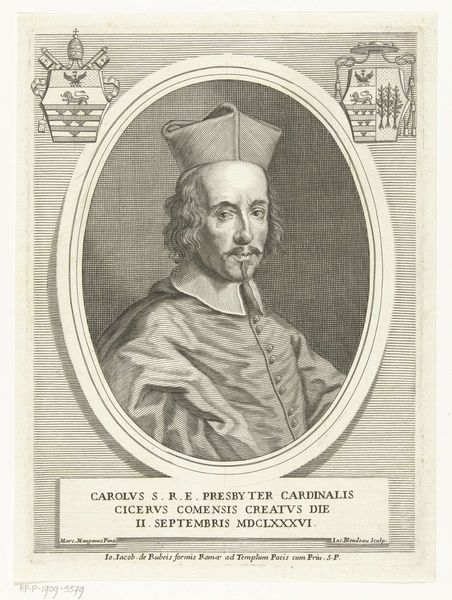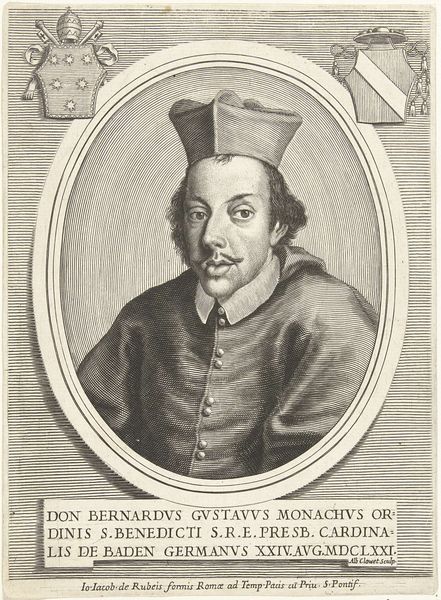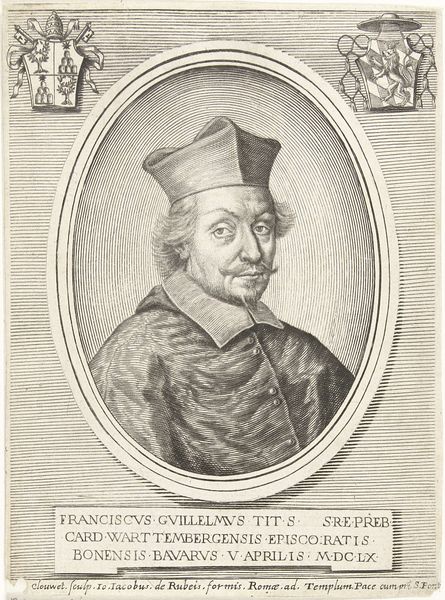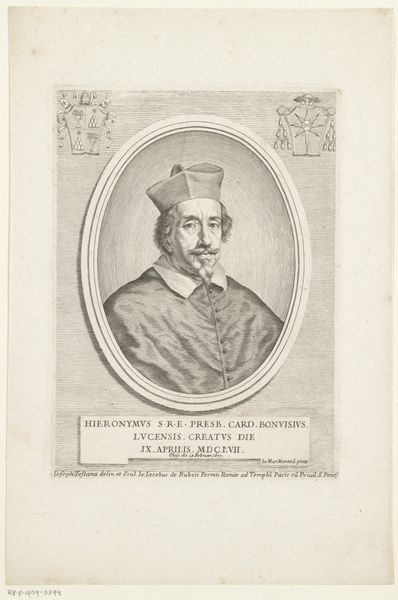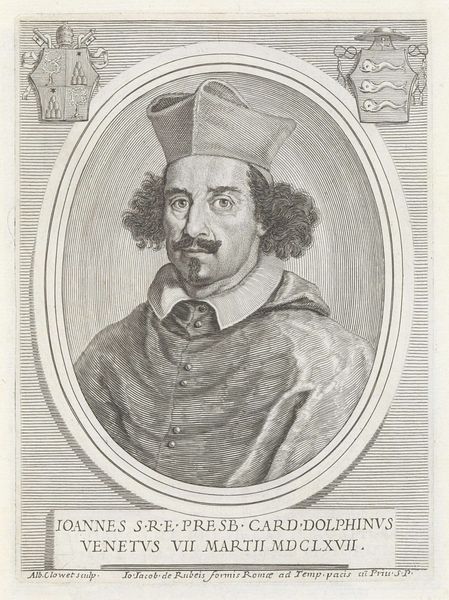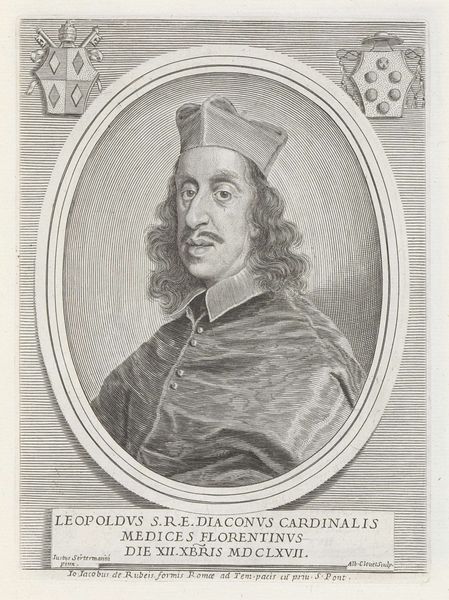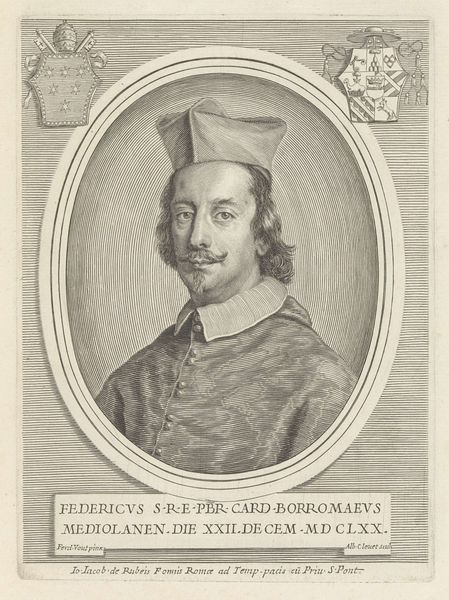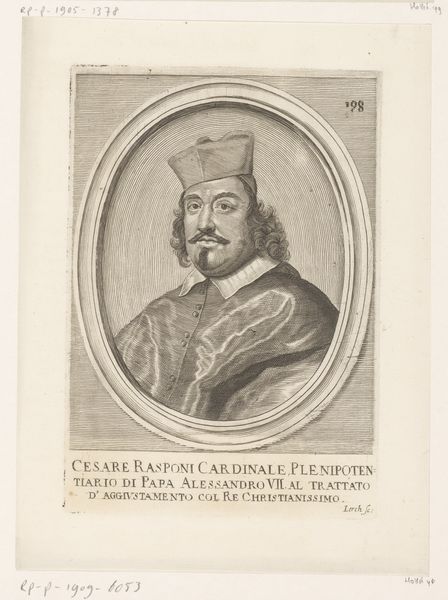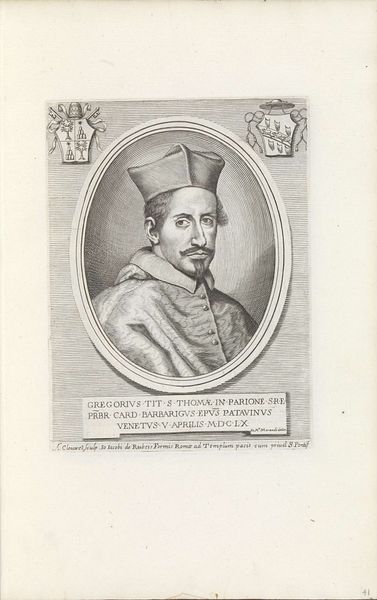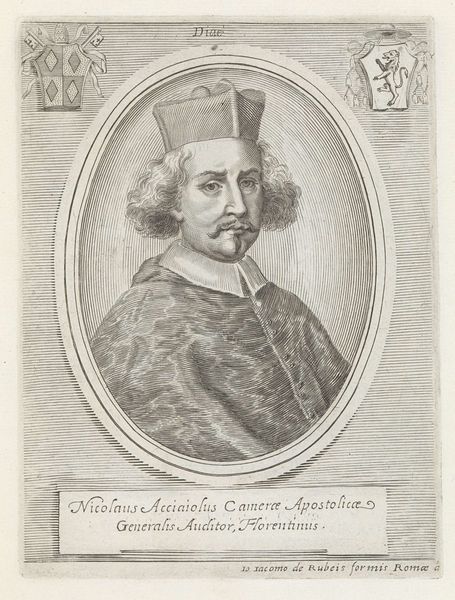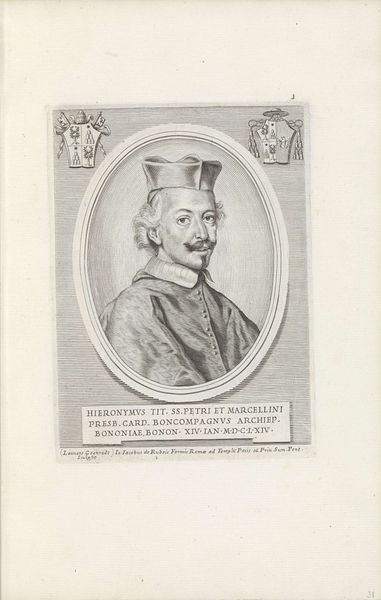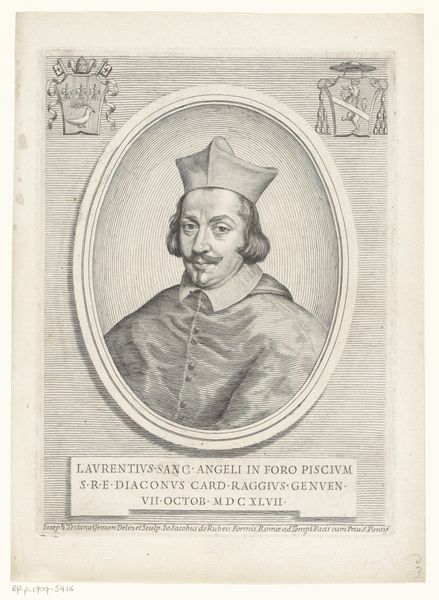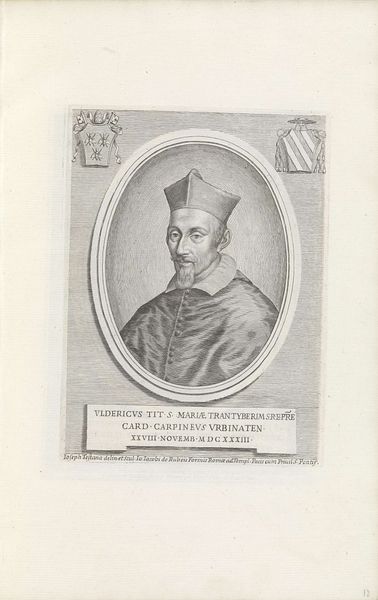
print, engraving
#
portrait
#
baroque
# print
#
engraving
Dimensions: height 205 mm, width 149 mm
Copyright: Rijks Museum: Open Domain
Editor: This is "Portret van kardinaal Stefano Agostini" by Jacques Blondeau, made sometime between 1683 and 1698. It's an engraving, a print. The detail is incredible! The figure seems very stately. What do you see when you look at it? Curator: Formally, the composition utilizes a strong oval frame, bisecting the visual field and directing attention to the figure's face. Observe how Blondeau modulates the density of etched lines to sculpt the cardinal's features and clothing, achieving a remarkable tonal range within the monochromatic medium. Editor: The hatching is incredible! I hadn't really focused on it until you mentioned it. So the structure of the lines helps to create the impression of depth. Curator: Precisely. The interplay of light and shadow is crucial. The engraver masterfully uses contrasting dark and light areas to articulate the cardinal's robes and the texture of his facial features, which draws our attention. Notice too, the careful arrangement of heraldic symbols that frame the central image; how do these elements affect the composition? Editor: They balance out the negative space, the emptiness surrounding the portrait itself, but also give more context. They look very detailed and elegant. Is that typical of Baroque portraiture? Curator: That is right. In many baroque works, elements such as composition, tonality, or fine details work in concert to emphasize the subject's power. Thinking about this piece, what, for you, is the most interesting aspect of the work's formal arrangement? Editor: It’s definitely the way the artist has used the hatching. I learned a lot. Thank you! Curator: The pleasure was all mine. Studying Blondeau's engraving certainly offers insights into the intricacies of formal composition.
Comments
No comments
Be the first to comment and join the conversation on the ultimate creative platform.
